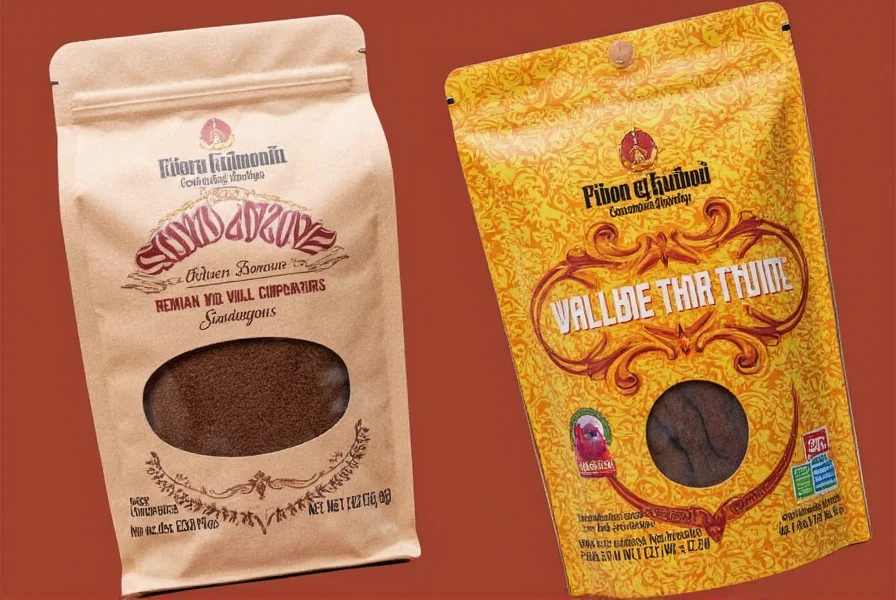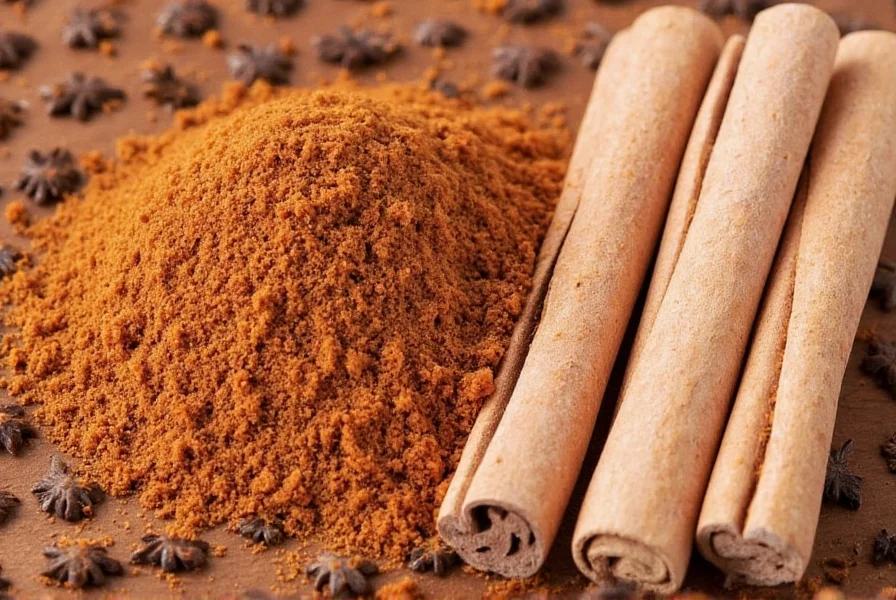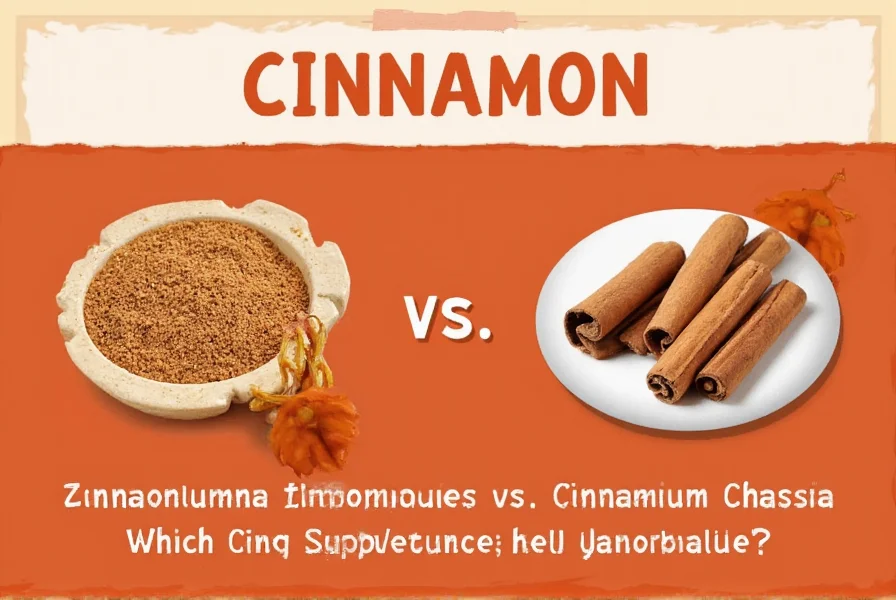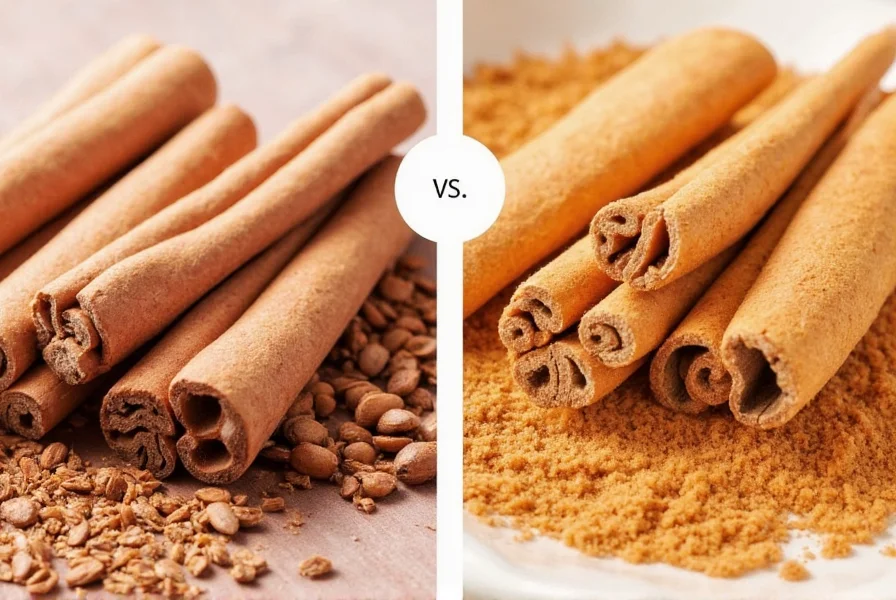Ceylon cinnamon (Cinnamomum Zeylanicum) and Cassia cinnamon (Cinnamomum Cassia) are two distinct types of cinnamon with significant differences in health implications, flavor, and culinary uses. While Ceylon is often called 'true cinnamon' and is safer for daily consumption due to low coumarin levels, Cassia is more common and has a stronger flavor but higher coumarin content, which can pose health risks with excessive intake. Here's a detailed comparison to help you choose the right one for your needs.
| Ceylon Cinnamon | Cassia Cinnamon | |
|---|---|---|
| Nickname | "True Cinnamon" | "Chinese Cinnamon" |
| Origin | Sri Lanka | China, Vietnam, Indonesia |
| Color | Pale tan to light brown | Dark reddish-brown |
| Texture | Thin, multi-layered bark | Thick, hard bark |
| Taste | Mild, sweet, delicate | Strong, spicy, sometimes bitter |
| Coumarin Content | Low (safe for daily use) | High (potential liver risk) |
| Price | More expensive | Affordable |

Botanical Breakdown: Origins & Characteristics
Both species belong to the laurel family (Lauraceae), but their botanical lineage leads to vastly different outcomes when it comes to quality, aroma, and safety.
Ceylon Cinnamon (Cinnamomum Zeylanicum)
Native to Sri Lanka, this is the original cinnamon prized by ancient civilizations. It's made from the inner bark of the tree, carefully harvested and dried into thin, layered sticks. Due to meticulous processing requirements, Ceylon cinnamon is more labor-intensive to produce, resulting in its premium price. The European Food Safety Authority (EFSA) recognizes its low coumarin content as safe for regular consumption.

Cassia Cinnamon (Cinnamomum Cassia)
Primarily grown in China, Vietnam, and Indonesia, Cassia cinnamon has thicker, harder bark that's easier to harvest and process. This makes it more cost-effective for mass production, which is why it dominates supermarket shelves (over 90% of US cinnamon sales). However, its high coumarin content requires moderation in consumption to avoid potential liver risks.

Flavor Profiles: Sweet Subtlety vs. Bold Punch
Ceylon Cinnamon Flavor
Delicate, sweet, and slightly citrusy, Ceylon cinnamon blends beautifully into both sweet and savory dishes without overpowering them. Its mildness makes it ideal for subtle applications like custards, white sauces, and Mediterranean desserts where you want just a whisper of warmth and complexity.

Cassia Cinnamon Flavor
Cassia, by contrast, hits your palate like a cinnamon sledgehammer. Strong, spicy, and slightly bitter, it's the go-to for bold flavors — think pumpkin spice lattes, cinnamon rolls, gingerbread, and spiced meats. It's punchy and assertive, which makes it great for recipes where cinnamon is meant to be front and center.
Health Benefits: Science-Backed Insights
While both types of cinnamon offer health benefits, the coumarin content difference is critical for safety:
Ceylon Cinnamon
- Contains negligible levels of coumarin (below 0.01% per gram)
- Rich in antioxidants and anti-inflammatory compounds
- May help regulate blood sugar levels with no significant liver risk
- Recommended by EFSA for daily consumption
Cassia Cinnamon
- Contains high coumarin levels (0.3-1.2% per gram)
- Should be consumed in moderation (max 1/2 teaspoon daily for adults)
- Still provides anti-inflammatory and antioxidant properties
- Not recommended for long-term daily use due to liver toxicity risks
The European Food Safety Authority (EFSA) states: "The tolerable daily intake for coumarin is 0.1 mg per kilogram of body weight." For a 70kg adult, this equals approximately 7mg daily — equivalent to about half a teaspoon of Cassia powder.
Culinary Uses: When to Use Each Type
Best Uses for Ceylon Cinnamon
- Baking delicate pastries and cakes
- Mixing into custards, creams, and sauces
- Adding to mulled wines and herbal teas
- Incorporating into traditional Mediterranean and Middle Eastern dishes
- Using in infant and toddler-friendly recipes
Best Uses for Cassia Cinnamon
- Baking cookies, muffins, and pies
- Spicing up chili, stews, and braises
- Making homemade chai or spiced coffee
- Creating festive holiday treats (cinnamon rolls, apple pie)
- Commercial food production due to cost-effectiveness
Buying Guide: How to Spot Real Cinnamon
Look for Labels That Say "Ceylon" or "Cinnamomum Zeylanicum"
Never rely on vague terms like "real cinnamon." Always check for "Ceylon" or the Latin name. The USDA requires accurate labeling for cinnamon types sold in the US.
Check the Texture and Appearance
Ceylon cinnamon sticks are thin, brittle, and multi-layered (like rolled cigars), while Cassia sticks are thick, hard, and single-layered. Ceylon cinnamon powder is lighter in color and finer in texture.
Read the Fine Print
Many "cinnamon" products are actually Cassia. Choose brands with third-party testing certifications like NSF or USP for quality assurance.
Trusted Brands Verified by Food Safety Experts
| Brand | Type | Features | Best For |
|---|---|---|---|
| Fairchild Naturals | Ceylon | USDA Organic, third-party coumarin tested | Health-conscious consumers |
| Spice House | Ceylon | Specialty spice merchant, verified origin | Culinary professionals |
| McCormick | Cassia | Widely available, consistent quality | Everyday cooking |
| Simply Organic | Cassia | Non-GMO Project Verified | Baking and holiday recipes |

FAQ: Science-Backed Answers
Which cinnamon is safer for daily consumption?
Ceylon cinnamon is safer for daily consumption due to negligible coumarin levels. Cassia cinnamon contains high coumarin that may cause liver damage with prolonged use. The EFSA recommends limiting Cassia to 0.1mg per kg of body weight daily (about 1/2 tsp for adults).
How can I tell them apart in the store without labels?
Examine the sticks: Ceylon cinnamon appears as thin, brittle, multi-layered quills that crumble easily and have a light tan color. Cassia forms thick, hard, single-layer sticks with a dark reddish-brown color that's difficult to break. Ceylon powder is lighter and finer than Cassia's coarse texture.
Why is Ceylon cinnamon more expensive?
Ceylon cinnamon requires labor-intensive harvesting of delicate inner bark from Sri Lankan trees, with lower yields per tree. Cassia is easier to harvest from fast-growing Asian trees, making it 3-5x cheaper to produce. The price difference reflects the superior quality and safety of Ceylon.
Can I substitute Cassia for Ceylon in recipes?
Yes, but with adjustments: Use half the amount of Cassia due to its stronger flavor. Never substitute Cassia in recipes for infants, toddlers, or daily medicinal use due to coumarin risks. For baking, Cassia works well in robust recipes like gingerbread, while Ceylon shines in delicate applications like custards.
Does Cassia cinnamon offer health benefits despite coumarin concerns?
Yes, Cassia contains similar beneficial compounds as Ceylon, including antioxidants and blood sugar-regulating properties. However, its higher coumarin content means it should be consumed in moderation (max 1/2 tsp daily) rather than as a daily supplement. For therapeutic use, Ceylon is always the safer choice.
Why do supermarkets mostly sell Cassia instead of Ceylon?
Cassia dominates supermarket shelves (over 90% of US sales) because it's cheaper to produce, has a stronger shelf-stable flavor preferred in processed foods, and grows more abundantly across multiple countries. Many consumers also prefer its bolder taste in traditional American baked goods. However, health-conscious consumers should seek out Ceylon for daily use.
Final Verdict: Science-Based Recommendation
Based on FDA and EFSA guidelines:
- For health-focused consumers: Always choose Ceylon cinnamon. Its negligible coumarin content makes it safe for daily use, especially for blood sugar management and long-term health.
- For occasional cooking: Cassia is acceptable in moderation (≤1/2 tsp daily) for bold-flavored recipes like cinnamon rolls or chili.
- For professional chefs: Keep both on hand — Ceylon for delicate applications and Cassia for robust dishes where flavor intensity is desired.
When in doubt, check the label for "Ceylon" or "Cinnamomum Zeylanicum" and verify third-party testing certifications. Your health and safety are worth the extra effort to choose wisely.










 浙公网安备
33010002000092号
浙公网安备
33010002000092号 浙B2-20120091-4
浙B2-20120091-4